Two new shows just for you. We have squeezed out two extended release episodes for this weekend to get you through this week. They contain mostly new songs but there's also new issues from the vaults. The first show features music from Rider/Horse, Mint Field, Robert Aiki Aubrey Lowe, Anastasia Coope, ISAN, Stone Music, La Securite, Bark Psychosis, Jon Rose, Master Wilburn Burchette, Umberto, Wand, Tim Koh, Sun An, and Memory Drawings. The second episode has music by Laibach, Melt-Banana, Chuck Johnson, X, K. Yoshimatsu, Dorothy Carter, Pavel Milyakov, Violence Gratuite, Mark Templeton, Dummy, Endon, body / negative, Midwife, Alberto Boccardi, Divine. Cow in Maui from Veronika in Vienna. Get involved: subscribe, review, rate, share with your friends, send images! |
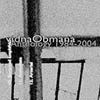 I find it odd that this collection is named Anthology,even though it consists of previously unreleased tracks. The onlytracks on this disc that were previously released surfaced onlong-deleted cassettes issued on obscure European labels. To me, theterm "anthology" denotes a representative collection documenting anartist's career, drawn from works previously available. I am perplexedat the claim that this collection of outtakes, live tracks and othermarginalia might constitute a proper documentation of the artist'scareer. Not nearly as perplexed, though, as when I attempt to ponderwho could possibly be interested enough in Vidna Obmana's music to havekept this artist afloat for the past two decades. Mr. Obmana ascribesto that common viewpoint that the term "ambient" must be synonymouswith "boring," creating album after unremarkable album filled to thebrim with dull New Age keyboards, drones and loops, with the occasionalforay into insulting ethnic plagiarism. This collection was recentlyreleased on the eternally lame Projekt, whose only standards fordeciding what their label will release appears to be directly dependanton how utterly, excruciatingly dull the music is. The tracks on thisanthology run the gamut from a mildly uninteresting retread ofThrobbing Gristle ("Ecstasy") to a violently uninteresting rip-off ofCoil ("Soul Dislocation"). In between is lots of fodder for NPR's Hearts of Space,Vidna Obmana thoughtfully providing crossfaded transitions from eachtrack to the next, so that the whole 72 minutes feels like one long,homogenized puddle of rancid fairy spooge. This music might work quitewell as a soundtrack for your local coven's next drawing down of themoon ceremony, or it might be perfect muzak for the waiting room ofyour local aura-reading and colonics center, but it fails in everyother sense. It blunts and smooths the edges off any sound that mightjar the listener out of sleepy complacence, leaving only anundifferentiated, quivering mass of odorless, flavorless gelatin in itswake. Suspended inside the unappetizing Jell-O mold are inedible chunksof musical ideas that might have been interesting had they not beentrapped inside this mess.
I find it odd that this collection is named Anthology,even though it consists of previously unreleased tracks. The onlytracks on this disc that were previously released surfaced onlong-deleted cassettes issued on obscure European labels. To me, theterm "anthology" denotes a representative collection documenting anartist's career, drawn from works previously available. I am perplexedat the claim that this collection of outtakes, live tracks and othermarginalia might constitute a proper documentation of the artist'scareer. Not nearly as perplexed, though, as when I attempt to ponderwho could possibly be interested enough in Vidna Obmana's music to havekept this artist afloat for the past two decades. Mr. Obmana ascribesto that common viewpoint that the term "ambient" must be synonymouswith "boring," creating album after unremarkable album filled to thebrim with dull New Age keyboards, drones and loops, with the occasionalforay into insulting ethnic plagiarism. This collection was recentlyreleased on the eternally lame Projekt, whose only standards fordeciding what their label will release appears to be directly dependanton how utterly, excruciatingly dull the music is. The tracks on thisanthology run the gamut from a mildly uninteresting retread ofThrobbing Gristle ("Ecstasy") to a violently uninteresting rip-off ofCoil ("Soul Dislocation"). In between is lots of fodder for NPR's Hearts of Space,Vidna Obmana thoughtfully providing crossfaded transitions from eachtrack to the next, so that the whole 72 minutes feels like one long,homogenized puddle of rancid fairy spooge. This music might work quitewell as a soundtrack for your local coven's next drawing down of themoon ceremony, or it might be perfect muzak for the waiting room ofyour local aura-reading and colonics center, but it fails in everyother sense. It blunts and smooths the edges off any sound that mightjar the listener out of sleepy complacence, leaving only anundifferentiated, quivering mass of odorless, flavorless gelatin in itswake. Suspended inside the unappetizing Jell-O mold are inedible chunksof musical ideas that might have been interesting had they not beentrapped inside this mess.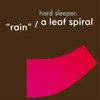 It's important to pace a record properly so that it doesn't becomestiff and monotonous. Peter Maybury begins his twenty-three minuteopener with a steady, meandering, and almost viscous series of soundsall seperated from eachother and mostly melodic. The charm of the pianoplaying and the babbling computer-speak all hint that this is going tobe a slow ride through electronic composition; everything will dependon how well the sounds are arranged in relation to eachother. Not muchhappens though and the sounds don't interact with eachother in anyinteresting manner. There are moments of unattenuated beauty, but thealbum simply never changes. To make matters worse, I tend to think thatopen-ended albums like this need some kind of unique palette, somethingakin to a unique signature. Many of the songs on these five songs soundfar too familiar, as though they've become parts of an electronic bankavailable to everyone who has a computer and a desire to move varioussamples around eachother. After about ten minutes of listening to"Rain" a second time, I was feeling quite anxious to move on. Thefour-part "A Leaf Spiral" doesn't provide anything in the way ofrelief, though. They're very much a "more of the same" series of songsand don't manage to make anything sound or feel any more exciting. Ilove lush soundscapes and I enjoy relaxing to very minimal-type music,but this just doesn't cut it. The sounds that were picked forutilization are lame at times and there's no emotional or visualcontent. In some ways the rather dull album art says everythig thatneeds to be said about this album.
It's important to pace a record properly so that it doesn't becomestiff and monotonous. Peter Maybury begins his twenty-three minuteopener with a steady, meandering, and almost viscous series of soundsall seperated from eachother and mostly melodic. The charm of the pianoplaying and the babbling computer-speak all hint that this is going tobe a slow ride through electronic composition; everything will dependon how well the sounds are arranged in relation to eachother. Not muchhappens though and the sounds don't interact with eachother in anyinteresting manner. There are moments of unattenuated beauty, but thealbum simply never changes. To make matters worse, I tend to think thatopen-ended albums like this need some kind of unique palette, somethingakin to a unique signature. Many of the songs on these five songs soundfar too familiar, as though they've become parts of an electronic bankavailable to everyone who has a computer and a desire to move varioussamples around eachother. After about ten minutes of listening to"Rain" a second time, I was feeling quite anxious to move on. Thefour-part "A Leaf Spiral" doesn't provide anything in the way ofrelief, though. They're very much a "more of the same" series of songsand don't manage to make anything sound or feel any more exciting. Ilove lush soundscapes and I enjoy relaxing to very minimal-type music,but this just doesn't cut it. The sounds that were picked forutilization are lame at times and there's no emotional or visualcontent. In some ways the rather dull album art says everythig thatneeds to be said about this album. 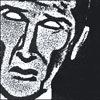 You Hold the World Like a Gun is Texan Greg Reynaud's selfdescribed "actualization of maximum potential." Loosely translated,that means it's the results of his first solo foray into the studioafter doing beats as a part of electropop outfit Lovetron and spaceyboombap minstrels The Town Drunks. So, now that his potential isactualized—and Reynaud has already proven he does indeed hold promisingpotential as a producer—he presents a dense, mysterious five track,nineteen-minute EP that thumps and pounds its way from track to track,occasionally pausing to reflect but nevertheless holding a boot to yourthroat and not letting go until it's done. Among the slick break beatsand crashing hi hats Reynaud flawlessly slips in the obligatoryotherwise-out-of-place sample, whether it be a few guitar chords, apiano key, a jazz break or even a Darth Vader inhale/exhale.Ostensibly, the EP is a concept album concerning the current Americanpolitical situation, a fact that isn't necessarily clear with a listenand not much clearer when perusing the liner notes. Still, what is aknown known (thank you, Department of Defense) is that Reynaud knowswhat he's doing, and perhaps there is some truth to that whole"actualization of potential" line. Released from the bounds that comewith working with other musicians, Reynaud is able to let hismultitalented production skills roam free, with compelling results.Most impressive, however, is his ability to tread the thin line betweenimprovisation and complete anarchy. His music wanders, but neveraimlessly. He is able to make out of what might be an unrecognizablemishmash with another producer into a thrilling blend of surprisinglyorchestrated adrenaline-laced sound.
You Hold the World Like a Gun is Texan Greg Reynaud's selfdescribed "actualization of maximum potential." Loosely translated,that means it's the results of his first solo foray into the studioafter doing beats as a part of electropop outfit Lovetron and spaceyboombap minstrels The Town Drunks. So, now that his potential isactualized—and Reynaud has already proven he does indeed hold promisingpotential as a producer—he presents a dense, mysterious five track,nineteen-minute EP that thumps and pounds its way from track to track,occasionally pausing to reflect but nevertheless holding a boot to yourthroat and not letting go until it's done. Among the slick break beatsand crashing hi hats Reynaud flawlessly slips in the obligatoryotherwise-out-of-place sample, whether it be a few guitar chords, apiano key, a jazz break or even a Darth Vader inhale/exhale.Ostensibly, the EP is a concept album concerning the current Americanpolitical situation, a fact that isn't necessarily clear with a listenand not much clearer when perusing the liner notes. Still, what is aknown known (thank you, Department of Defense) is that Reynaud knowswhat he's doing, and perhaps there is some truth to that whole"actualization of potential" line. Released from the bounds that comewith working with other musicians, Reynaud is able to let hismultitalented production skills roam free, with compelling results.Most impressive, however, is his ability to tread the thin line betweenimprovisation and complete anarchy. His music wanders, but neveraimlessly. He is able to make out of what might be an unrecognizablemishmash with another producer into a thrilling blend of surprisinglyorchestrated adrenaline-laced sound. After several years as a member of the Chicago UndergroundDuo/Trio/Quartet/Orchestra, along with several recordings as acompetent and inventive sideman, drummer Chad Taylor has penned andrecorded a disc's worth of tunes under the name Active Ingredients. Attimes a sextet featuring Underground partner Rob Mazurek on cornet andSteve Swell (William Parker/Baron Down) on trombone, it's easy to viewTitrationas a free jazz recording due to the lack of any chordal instrumentsoutlining progressions and form. As a leader, Taylor's unique,polyrhythmic drive and fluid performance are central, although this isnot your stereotypical drummer record. His approach and outputon the kit is dynamic and very musical, which is not surprising as he'dbeen a classical guitarist in his youth; the same musical sensibilitycomes through in his compositions. "Song For Dyani" opens withblistering latin rhythms and busy, staccato upright bass laying thefoundation for unison horns to state the sweet and slurring melodybefore breaking off for both individual and simultaneous soloing. Thelightning fast cross stick and tom fills kicking off "Slate" areaugmented by percussionist Avreeayl Ra's fills to convey a true Africanensemble feel for saxophone shrills and trills play off. Bassist TomAbbs' melodic lines set things in motion off the top of "ModernMythology" which in turn supports a brief big band ensemble motifbefore stripping down for sax soloing an unison crazy-go-nutsexplorations. Taylor's use of bare hands, mallets and sticks on hissolo performance "Dependent Origination" convey several different tonesand textures. Having spent a great deal of time listening to him onseveral recordings and seeing him in performance on several occasions,it's safe to say that although spontaneity figures heavily in such asituation, his ability to convey melodic ideas and structure isuncanny. The group assembled on Titration are all competentmusicians and soloists that give strong direction to Taylor's sometimesminimal motifs. The excitement generated in performance for thisrecording has them coloring outside the lines with a free jazzapproach, but without going completely off the page into cacophony.
After several years as a member of the Chicago UndergroundDuo/Trio/Quartet/Orchestra, along with several recordings as acompetent and inventive sideman, drummer Chad Taylor has penned andrecorded a disc's worth of tunes under the name Active Ingredients. Attimes a sextet featuring Underground partner Rob Mazurek on cornet andSteve Swell (William Parker/Baron Down) on trombone, it's easy to viewTitrationas a free jazz recording due to the lack of any chordal instrumentsoutlining progressions and form. As a leader, Taylor's unique,polyrhythmic drive and fluid performance are central, although this isnot your stereotypical drummer record. His approach and outputon the kit is dynamic and very musical, which is not surprising as he'dbeen a classical guitarist in his youth; the same musical sensibilitycomes through in his compositions. "Song For Dyani" opens withblistering latin rhythms and busy, staccato upright bass laying thefoundation for unison horns to state the sweet and slurring melodybefore breaking off for both individual and simultaneous soloing. Thelightning fast cross stick and tom fills kicking off "Slate" areaugmented by percussionist Avreeayl Ra's fills to convey a true Africanensemble feel for saxophone shrills and trills play off. Bassist TomAbbs' melodic lines set things in motion off the top of "ModernMythology" which in turn supports a brief big band ensemble motifbefore stripping down for sax soloing an unison crazy-go-nutsexplorations. Taylor's use of bare hands, mallets and sticks on hissolo performance "Dependent Origination" convey several different tonesand textures. Having spent a great deal of time listening to him onseveral recordings and seeing him in performance on several occasions,it's safe to say that although spontaneity figures heavily in such asituation, his ability to convey melodic ideas and structure isuncanny. The group assembled on Titration are all competentmusicians and soloists that give strong direction to Taylor's sometimesminimal motifs. The excitement generated in performance for thisrecording has them coloring outside the lines with a free jazzapproach, but without going completely off the page into cacophony.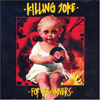 If I was making a compilation to introduce a friend to the work of Killing Joke, it's track listing would overlap with that of For Beginners by only three tracks, "Fun & Games", "The Wait" and "Night Time". Never before have I encountered such a willfully obscure selection masquerading as a perfect entry point to a band's back catalog.
If I was making a compilation to introduce a friend to the work of Killing Joke, it's track listing would overlap with that of For Beginners by only three tracks, "Fun & Games", "The Wait" and "Night Time". Never before have I encountered such a willfully obscure selection masquerading as a perfect entry point to a band's back catalog.
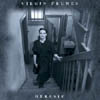 This was originally released in 1982 on the L'Invitation au Suicide label as two 10" singles packaged together in a box which also contained several booklets illustrating the perverse marriage of aesthetics, insanity and filth which characterized the Virgin Prunes at this artistic phase. Mute's reissue does a flawless job of presenting the music, which is digitally restored and remastered, both parts presented together on a single disc. However, they have chosen not to reprint the art booklets originally included with the set, which is unfortunate for a band as visually oriented as the Prunes.
This was originally released in 1982 on the L'Invitation au Suicide label as two 10" singles packaged together in a box which also contained several booklets illustrating the perverse marriage of aesthetics, insanity and filth which characterized the Virgin Prunes at this artistic phase. Mute's reissue does a flawless job of presenting the music, which is digitally restored and remastered, both parts presented together on a single disc. However, they have chosen not to reprint the art booklets originally included with the set, which is unfortunate for a band as visually oriented as the Prunes.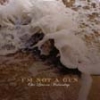 On their debut album, John Tejada and Takeshi Nishimoto displayed aclever grasp of electronic-tinged instrumental music, virtuoso-style,with tasty guitar and bass flourishes layered over real drums andwhatever the laptop pushed out as the master controlled it. They'vecontinued their regular regimen of playing and recording together onWednesdays, no matter what their schedules had in store, and the fruitsof that labor, their second record, receives its title from the veryprocess that produced it. With these songs, it seems thelaptop-produced elements have become more of a basis for the songs,rather than skeletal remains that were thrown in for flavor. Theopening track, "Walk Through Walls," starts with a manipulated andglitched sample that provides a basic beat, then "real" instrumentstake it over, guitar/bass/drums in full lock-on mode with gorgeoussolo-like flourishes. Every once in a while that sample or anotherreturns, just as a reminder that it was the catalyst, but it's mostlybusiness as usual. The two pile on the processed guitars, variousguitar tracks, and the slapped bass, add some delay and echo effects,and stride comfortably towards the finish line, knowing full wellthey're ahead. "Every Moment is Ours" begins much in the same regard,with computer magic and deep bass followed by gentle guitar, thenhypnotizing bass chords and that familiar guitar tone join the fun.Halfway through, live drums kick in briefly, only to relent to theirmore processed brethren. Ultimately, the process is slightly differenton this record, but the music is very much the same, which is to sayclearly produced and recorded and excellently played. The songwritingis a bit limited to the aforementioned format, however, and though thechill-out lounge style form bursts into jazz-like improvisations, thebasic structure is very much consistent with most songs, as is the toneand presentation. That's the only complaint, however, and it's not muchof one, as the songs are still pleasant enough to listen to. It wouldjust help to hear a bit more variety in this art, and not have to waituntil the next day in the week to get it.
On their debut album, John Tejada and Takeshi Nishimoto displayed aclever grasp of electronic-tinged instrumental music, virtuoso-style,with tasty guitar and bass flourishes layered over real drums andwhatever the laptop pushed out as the master controlled it. They'vecontinued their regular regimen of playing and recording together onWednesdays, no matter what their schedules had in store, and the fruitsof that labor, their second record, receives its title from the veryprocess that produced it. With these songs, it seems thelaptop-produced elements have become more of a basis for the songs,rather than skeletal remains that were thrown in for flavor. Theopening track, "Walk Through Walls," starts with a manipulated andglitched sample that provides a basic beat, then "real" instrumentstake it over, guitar/bass/drums in full lock-on mode with gorgeoussolo-like flourishes. Every once in a while that sample or anotherreturns, just as a reminder that it was the catalyst, but it's mostlybusiness as usual. The two pile on the processed guitars, variousguitar tracks, and the slapped bass, add some delay and echo effects,and stride comfortably towards the finish line, knowing full wellthey're ahead. "Every Moment is Ours" begins much in the same regard,with computer magic and deep bass followed by gentle guitar, thenhypnotizing bass chords and that familiar guitar tone join the fun.Halfway through, live drums kick in briefly, only to relent to theirmore processed brethren. Ultimately, the process is slightly differenton this record, but the music is very much the same, which is to sayclearly produced and recorded and excellently played. The songwritingis a bit limited to the aforementioned format, however, and though thechill-out lounge style form bursts into jazz-like improvisations, thebasic structure is very much consistent with most songs, as is the toneand presentation. That's the only complaint, however, and it's not muchof one, as the songs are still pleasant enough to listen to. It wouldjust help to hear a bit more variety in this art, and not have to waituntil the next day in the week to get it.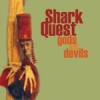 It's rare that a group of musicians can start crafting a score for a movie about a famed clay animator, braving new territory musically in the process, and end up with an album that transcends every move they've made in the past. That it comes from Shark Quest is no real surprise, as they've been wowing audiences in/outside of their native North Carolina towns for almost a decade. The resulting music is an amalgamation of styles and features the band's first use with piano, synthesizers, and various types of unique percussion.
It's rare that a group of musicians can start crafting a score for a movie about a famed clay animator, braving new territory musically in the process, and end up with an album that transcends every move they've made in the past. That it comes from Shark Quest is no real surprise, as they've been wowing audiences in/outside of their native North Carolina towns for almost a decade. The resulting music is an amalgamation of styles and features the band's first use with piano, synthesizers, and various types of unique percussion.




